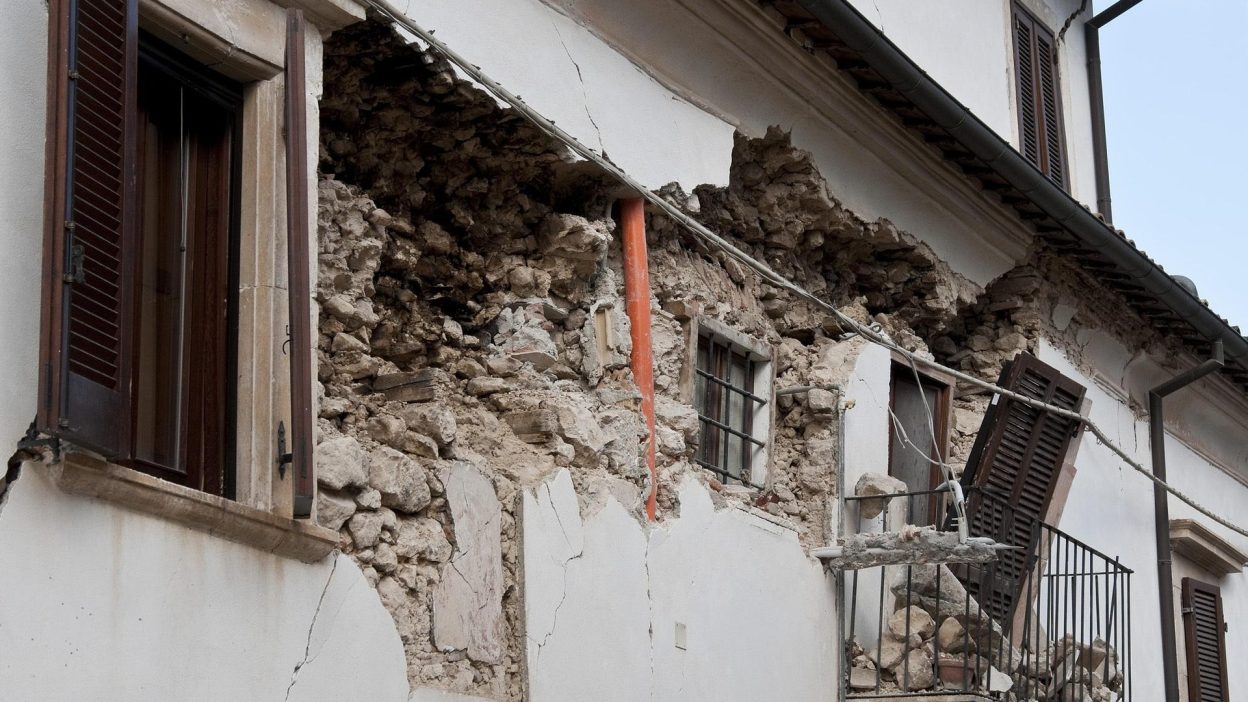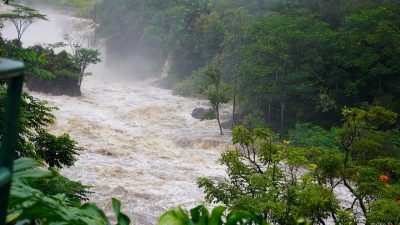When The Earth Shattered India’s Heart
1. Introduction: A Catastrophe That Shook an Entire Nation
On 26th January 2001, as India celebrated its 52nd Republic Day, a powerful 7.7 magnitude earthquake struck the western state of Gujarat. This devastating tremor left an unforgettable scar on the region, bringing mass destruction, immense suffering, and long-term socio-economic turmoil. The quake, with its epicentre near Bhuj, caused widespread ruin across the state, flattening homes, schools, hospitals, and government buildings within seconds.
The earthquake’s impact was so severe that it killed thousands, left millions homeless, and inflicted economic losses amounting to billions of dollars. Entire districts were reduced to rubble, and the emergency response faced overwhelming challenges. Even after more than two decades, the memories of this disaster remain deeply ingrained in India’s history.
2. The Moment Disaster Struck: How and Where It Happened
At exactly 8:46 AM IST, the ground beneath Gujarat trembled violently. The earthquake, originating from the Kachchh region, had a depth of 16 kilometres, making it an extremely shallow and destructive quake. The tremors were felt across northern and western India, reaching as far as Delhi, Nepal, and even some parts of Pakistan.
The seismic waves were so intense that they triggered widespread liquefaction, where the ground turned into a semi-liquid state, causing buildings and infrastructure to collapse instantly. The tremors lasted only a few minutes, but the destruction they left behind would take years to recover from.
3. The Human Cost: Death Toll, Injuries, and Destruction
The Gujarat earthquake’s devastation was unimaginable, with casualties and damage figures skyrocketing.
- Death Toll: Over 20,000 people lost their lives, with some reports estimating even higher numbers.
- Injured: More than 166,000 were severely wounded, many suffering from permanent disabilities.
- Homeless: Around 600,000 homes were destroyed, rendering nearly a million people homeless overnight.
- Economic Damage: The disaster caused financial losses exceeding $5 billion, crippling the region’s economy.
- Destroyed Infrastructure: Schools, hospitals, roads, and historical sites were completely wiped out, leaving Gujarat in ruins.
4. Why Was the Destruction So Severe? The Science Behind the Disaster
Several factors contributed to the massive scale of destruction in Gujarat.
Firstly, the shallow depth of the earthquake amplified its impact, making ground shaking extremely intense in and around Bhuj. The fault lines in the Kachchh region had been dormant for decades, leading to a build-up of stress that eventually released with catastrophic force.
Secondly, poor construction practices played a crucial role in the widespread devastation. Many buildings, even in urban areas, were not earthquake-resistant. The use of low-quality materials and a lack of strict building regulations meant that thousands of homes and structures collapsed like a house of cards.
Lastly, the time of the earthquake contributed to the high death toll. Since it struck in the morning, people were still inside their homes, increasing the number of fatalities. Had it occurred later in the day, when people were outside, the casualties might have been lower.
5. Immediate Response: A Struggle Against Time and Chaos
In the aftermath of the quake, Gujarat descended into chaos and despair. The Indian government, along with international aid organisations, rushed to provide emergency relief, but the scale of destruction made rescue operations extremely challenging.
Thousands of people were buried alive under rubble, with rescue teams and volunteers racing against time to pull out survivors. However, lack of proper equipment, combined with damaged roads and collapsed communication networks, slowed down the rescue efforts.
Massive relief camps were set up to provide food, water, and medical aid, but supplies were scarce, and thousands of survivors were left without shelter in freezing temperatures. The situation was further worsened by looting and administrative mismanagement, sparking public outrage.
6. Long-Term Impact: How Gujarat Rebuilt Itself from Ashes
Even years after the earthquake, Gujarat continued to struggle with its long-term consequences. The devastation left behind psychological trauma, particularly among children and those who lost entire families.
The economic recovery was another uphill battle. With thousands of businesses wiped out, the local economy suffered huge setbacks. Farmers, shopkeepers, and traders were left jobless, and reconstruction costs drained government resources.
However, Gujarat’s spirit of resilience shone through. The state government, along with international NGOs and private companies, launched massive rebuilding projects. Cities were reconstructed with better urban planning and improved infrastructure, ensuring that new buildings followed stricter earthquake-resistant guidelines.
7. Government’s Role: A Tale of Leadership and Failures
- Emergency Response: While relief efforts were swift, the initial response was slow, causing many deaths due to delays in medical aid.
- Infrastructure Rebuilding: The government enforced new construction laws to prevent such disasters in the future.
- Financial Assistance: Survivors were provided compensation and housing, but bureaucratic hurdles delayed relief distribution.
- Criticism: The government faced widespread criticism for corruption and inefficiency in handling aid funds.
8. Lessons Learned: Did India Prepare for the Next Big Quake?
The 2001 Gujarat Earthquake was a turning point for India’s disaster preparedness. Before this catastrophe, the country lacked a proper earthquake response strategy. The sheer scale of destruction forced the government, scientists, and urban planners to re-evaluate India’s vulnerability to earthquakes and take corrective measures.
One of the most important steps taken was the introduction of stricter building regulations. Many structures that collapsed in Gujarat were built with poor materials and outdated methods, making them highly unsafe during an earthquake. After the disaster, the Bureau of Indian Standards (BIS) revised its seismic design codes, ensuring that all new constructions in high-risk zones adhered to earthquake-resistant guidelines.
Another major change was the development of India’s disaster management framework. The government established the National Disaster Management Authority (NDMA) in 2005, a specialised body responsible for planning, coordinating, and implementing disaster response policies. The NDMA introduced earthquake drills, public awareness campaigns, and emergency response training for schools, workplaces, and government agencies.
Additionally, seismic monitoring systems were upgraded. India set up new earthquake observatories to track seismic activity in real time. These advancements aimed to provide faster warnings and reduce casualties in future disasters.
Despite these improvements, some challenges remain. Many older buildings in cities like Delhi, Mumbai, and Kolkata are still structurally weak, and enforcing earthquake safety regulations across all regions remains a slow process. While Gujarat’s earthquake taught India valuable lessons, the real question is: Has the country done enough to prevent another disaster of this scale?
9. Could It Happen Again? The Looming Threat of Future Quakes
The possibility of another massive earthquake hitting India is not just a theory—it is a scientific certainty. India sits on multiple seismic zones, and experts warn that another destructive earthquake is inevitable.
The Indian tectonic plate is constantly colliding with the Eurasian plate, creating immense pressure along fault lines. When this pressure builds up and releases, it results in earthquakes. The Himalayan region, which includes states like Uttarakhand, Himachal Pradesh, and northeastern India, is at high risk of experiencing a megaquake, possibly even stronger than Gujarat’s 2001 disaster.
Besides the Himalayan belt, cities like Delhi, Mumbai, Chennai, and Kolkata also lie in seismically active zones. While modern buildings follow earthquake-resistant codes, many older constructions remain highly vulnerable. Experts believe that if a quake of similar intensity were to strike a densely populated city, the death toll could be even higher than Gujarat’s.
The government and disaster response agencies continue to work on preparedness measures, but a large-scale earthquake drill has never been fully tested in real-life conditions. Emergency evacuation plans are in place, but whether they can handle a high-casualty event remains uncertain.
The Gujarat earthquake was a grim reminder of India’s seismic risks, and the question remains: How well prepared is the country for the next disaster?
10. Conclusion: A Tragedy That Must Not Be Forgotten
The 2001 Gujarat Earthquake was more than just a natural disaster—it was a human tragedy that exposed India’s infrastructure weaknesses, lack of preparedness, and response failures. The massive loss of life, economic damage, and long-term suffering made it one of the worst disasters in India’s modern history.
Despite the challenges, Gujarat rose from the rubble, proving that recovery and resilience are possible even after immense devastation. The state was rebuilt, construction laws were strengthened, and India’s disaster management policies improved significantly.
However, the threat of future earthquakes remains very real. If a similar disaster were to strike a major metropolitan city, the consequences could be even more catastrophic. Earthquakes cannot be prevented, but their impact can be minimised through better planning, stricter laws, and continuous public awareness.
The Gujarat earthquake must serve as a reminder that complacency can lead to disaster. The only way forward is to stay prepared, build stronger, and never forget the lessons learned from this tragic event.
FAQs
1. How many people died in the 2001 Gujarat earthquake?
Over 20,000 people lost their lives, with more than 166,000 injured and 600,000 homes destroyed.
2. Where was the epicentre of the Gujarat earthquake?
The epicentre was near Bhuj, in the Kachchh region of Gujarat, India.
3. What caused the 2001 Gujarat earthquake?
It was caused by the movement of the Indian tectonic plate, triggering a 7.7 magnitude quake.
4. How did India respond to the earthquake?
The Indian government launched rescue and relief operations, provided financial aid, and enforced stricter building codes.
5. Could another earthquake like this happen again?
Yes, India remains seismically active, and experts warn that another major earthquake is possible.




